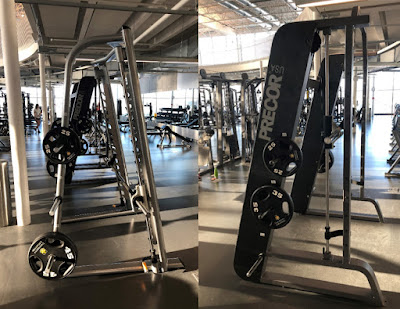Hanging for Shoulder Health
by Adam Toffan, M.Sc, NSCA-CSCS, CSEP-CEP,
Assistant Fitness Training and Assessment Coordinator, UM Recreation Services
Whether through exercise or from your occupation, shoulder and neck tightness is something most of us have to deal with at some point. Folks often look to massage to help alleviate the tension, but there are a few things you can add to your time in the gym that can further assist you.
The one I want to talk about in this post is hanging. Hanging is one of the best upper body stretches you can do. In fact, this is something you may want to consider incorporating into your daily routine.
There are many other benefits to hanging. They include increased grip strength, improved posture, Glenohumeral joint stability and Thoracic spine mobility. If you find you lack overhead reach range of motion, this is also a great exercise for you. However, hanging isn’t for everyone. If you have a shoulder injury from acute impact, you need time and caution to recover and hanging will not speed up the recovery process. But if you are hoping to improve posture, increase grip strength, stabilize your shoulder and maybe even build some psychological endurance then hanging could be a major key for you.
Disclaimer: Hanging isn’t as easy as it sounds. Start with shorter bouts of 10-30 seconds and work your way up to a minute. You also do not need to make it an exercise of its own in your workout (you can if you want). Space it out through the day and aim for an accumulation of time. Start with trying to accumulate three minutes of hanging and work your way up to seven minutes per day. Once you decide on how long to hang, you need to determine how to hang. Hanging is broken into three types:
Passive Hanging: Relaxed, deactivated hanging targets more of the passive structural integrity rather than muscular strength/endurance. This is the starting point when you begin hanging, regardless of the training goals.
Active Hanging: This includes selective activation by engaging musculature of the upper back and shoulders while minimizing the demands on the structural integrity of the shoulder. Active hangs are a type of strength work that focuses on straight arm scapular strength. Make sure to keep the arms straight through the entire exercise and keep the chest pointing forward.
Dynamic Hanging: Using a combination of passive and active hanging along with momentum to initiate a variety of movements like swinging or dynamic release and catch. Similar to the active hang, don’t bend the arms and try to stay relaxed in the shoulders through the swing.
Regardless of the type of hang you are working on, there are a few technical cues to think about to ensure you maintain proper alignment. Try to focus on contracting your core and pressing/squeezing your legs and glutes together. Give it a try but remember to start off slow and stick with it. Your shoulders and back with thank you later.
Climstein, Mike & Walsh, Joe. (2016). Research Review: Hanging, not always a punishment?. 2016. 46-47.
Kirsch, John M. (2019) Shoulder Pain? The Solution and Prevention. 3rd Edition. Morgan Hill, CA.




Why Is Grip Training So Important?
ReplyDeleteIt is a fact that debilitating illnesses are more likely if you don't have the right strength and endurance training for grip strength.
Here you will realize that you need much something beyond muscle growth supplements, to acquire fast muscle. The human body has various kinds of muscles like cardiovascular and skeletal muscles. We will discuss the skeletal muscle. Our skeletal muscle comprises myofibrils and sarcomeres that make a muscle fiber.
ReplyDeleteThe entryway staff was encouraged to guarantee that each exercise center part kept 6 feet separation while entering the exercise center. The passageway techniques and conventions are additionally referenced on the entryway. Physical Fitness and Exercise during COVID-19 was difficult as in the past.
ReplyDeleteYou won't discover any dream body gym that will change your body for the time being. It requires difficult work and devotion. The third step for your body change requires a day's walk.
ReplyDeleteEverybody in this world has diverse wellness objectives to accomplish. Additionally, a few group don't have the foggiest idea how to remain fit and they depend typical bodybuilder workout.
ReplyDelete